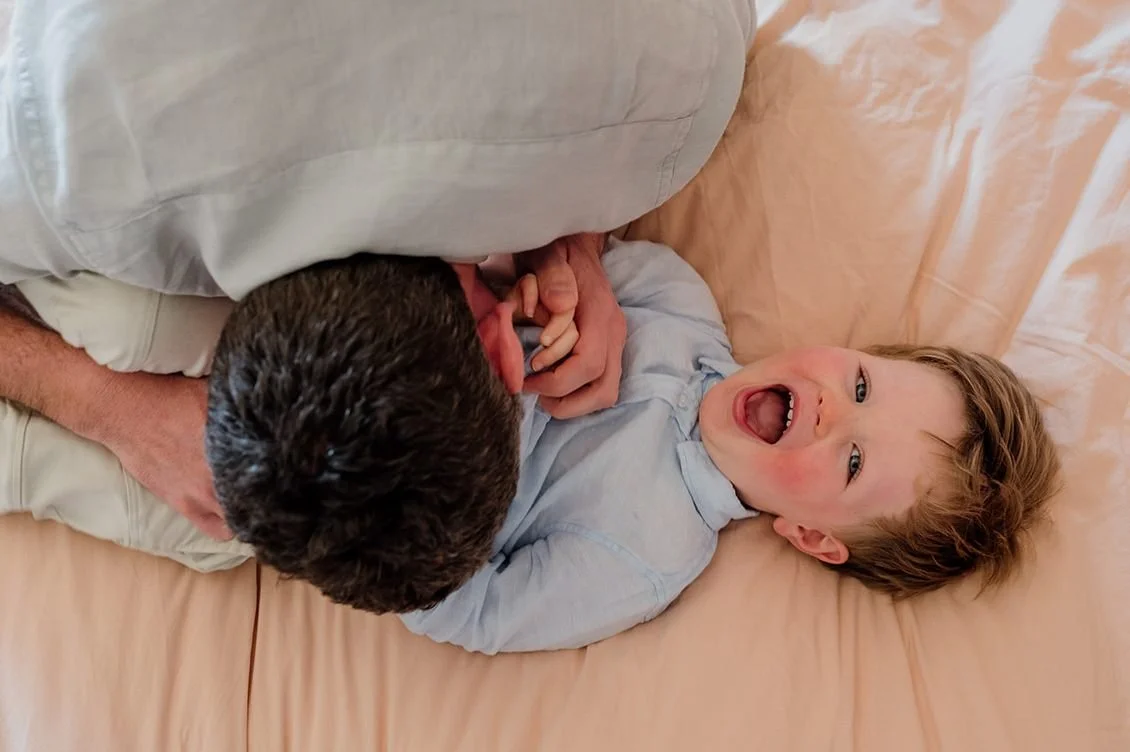My Child Only Wants Mom/Dad at Bedtime: A Sleep Consultant's Guide to Preferred Parenting
Whether you're dealing with preferred parent bedtime issues or you're the non-preferred parent, both scenarios are challenging. The preferred parent is likely touched out, overstimulated and in need of a break, while the non-preferred parent is left feeling hurt, disappointed and frustrated at feeling unable to help.
There is nothing like a tantrum-throwing toddler struggling at bedtime to tip the whole house into chaos. As a sleep consultant, I have helped many families transform bedtimes into their favourite part of the day.
Why Does My Child Only Have a Parent Preference at Bedtime?
If your toddler cries for mummy at bedtime when Dad tries to put her down, you're not alone. This behaviour is completely normal and developmentally expected at this age.
There are two things at play here.
Firstly, toddlers thrive in routine because having the ability to predict what is coming next gives them a sense of safety and security. If Mum puts them down most nights, then it is fair that their brain expects Mum to be the one doing bedtime. So when Dad enters the room and starts bedtime, suddenly reality doesn't match what their brain expected, and likely a tantrum ensues. Plus, everyone feels more vulnerable and less resilient at the end of a long day, and toddler's are no different.
Secondly, from around the age of two, toddlers crave some power and control, but there are minimal ways for them to exert that power. So if they feel they can control who puts them down, by throwing an almighty tantrum when Dad tries, the sense of power and control they receive when he gives up and Mum does the bedtime routine feels good.
Let me be clear that this is not manipulation, or in most cases, even a bedtime behaviour your toddler is consciously aware of. It is a normal part of toddler development.
How Can I Help My Toddler Accept Both Parents at Bedtime?
The best way to start is by including both parents in the bedtime routine. By introducing the non-preferred parent in this way, your little one will get used to having them partake in the routine. Simply being in the space and letting the preferred parent lead the way is fine. Then slowly transition to the non-preferred parent reading a book, or helping with pyjamas.
If you need ideas for developing a strong bedtime routine, I have some for you here.
Next, have the preferred parent step out of the room to run to the toilet or let the dog out. These short stints out of the room will start to build your toddler's capacity to remain emotionally regulated.
When you are ready to trial a bedtime routine with the non-preferred parent, prepare your toddler ahead of time that Mum/Dad will be putting them to bed. This may elicit some tears, but it is better they are prepared for the change rather than it being sprung on them unexpectedly at bedtime.
The best thing the preferred parent can do for themselves, and for the non-preferred parent, is to physically leave the house. This will help reduce the stress levels of both parents and also provide the space required for the non-preferred parent to lead with confidence.
Once you have made the transition to having the non-preferred parent putting your little one to bed, try and create a predictable rhythm to the routine. You may choose to swap parents each night, so to avoid a strong parental preference being formed. Or Dad does bedtime on the weekend and Mum during the week.
Whatever you choose that works for your family, try and keep it consistent in the first few weeks and if there is going to be a change to the status quo, let your little one know ahead of time.
Building Your Non-Preferred Parent Toolkit
Here is a list of things that a non-preferred parent can do to reduce stress at bedtime and help to build a bedtime routine that is calm and enjoyable for everyone:
Create an activity that only the non-preferred parent does - this could be rough play or a game.
Use humour and play to distract your toddler and promote oxytocin production. This will decrease cortisol levels in the lead-up to bedtime.
Increase 1:1 time at another time of the day. Don't underestimate the power of 10 minutes of play in establishing strong bonds.
Spend time playing in the sleep space.
Allow your child to make choices where possible, like which pyjamas to wear or books to read.
Use books like The Invisible String by Patrice Karst to teach concepts and combat separation anxiety.
Validating Emotions While Maintaining Sleep Routines
Despite your best efforts to create a positive transition by going slowly, preparing your toddler and leaning into play, they still may have a strong emotional response to the non-preferred parent putting them to bed.
And that is okay.
An important aspect of raising emotionally resilient children and creating a secure attachment is accepting all emotions - even the hard ones of anger, frustration and disappointment.
You can hold space for those emotions without moving the boundary. When they cry for Mum at bedtime, use phrases like "I know you want Mum. She is the best, isn't she? It is her turn tomorrow night, but tonight it is Dad's turn. I am so lucky I get to put you to bed." This way, you validate how they feel, but also reinforce the sleep boundary.
By keeping calm, confident and emotionally regulated yourself, the more quickly your toddler will accept the new norm in their bedtime routine.
You won't go perfectly the first time, but with practice and persistence, your toddler will adjust and bedtime battles will resolve.
If you need help reducing bedtime battles for your toddler, book a Discovery Call or check out our Sleep Support Packages to see how we can help you create those sought after settled nights.



